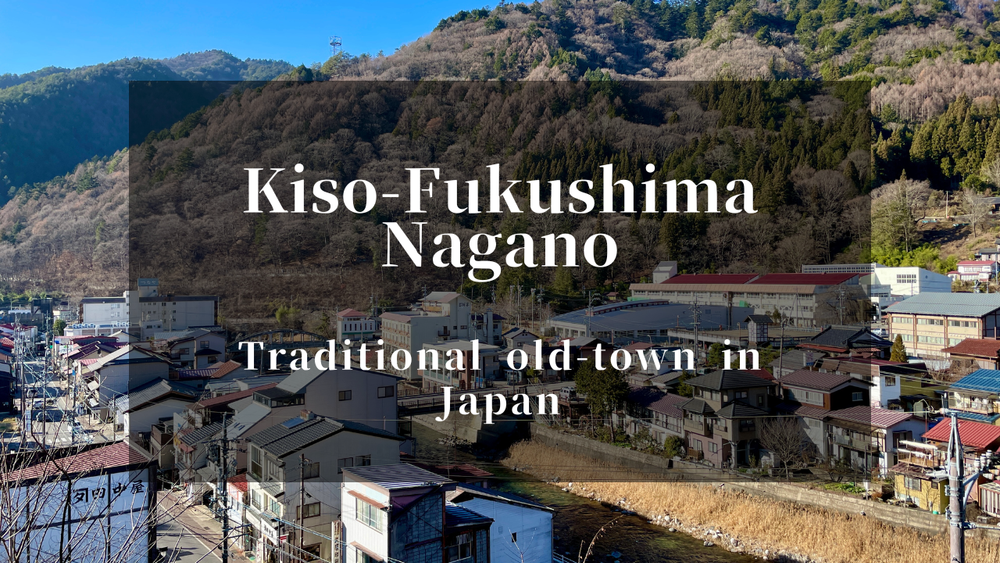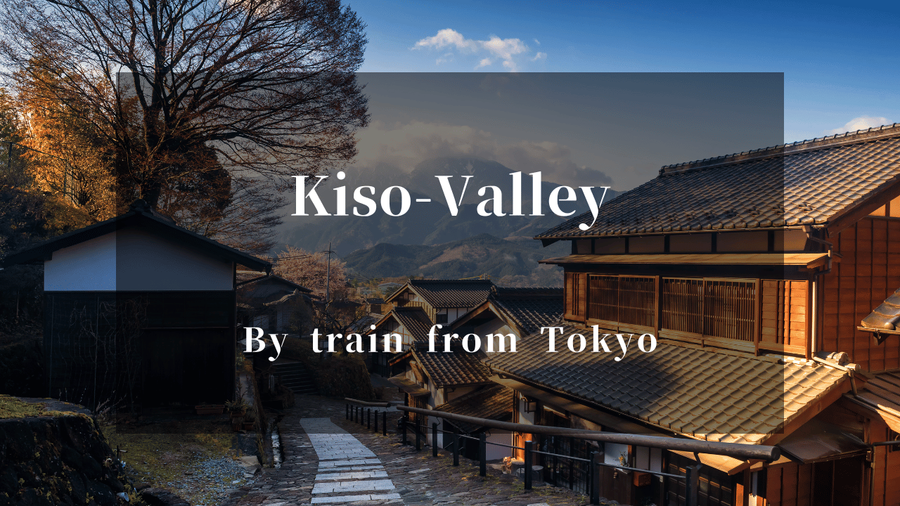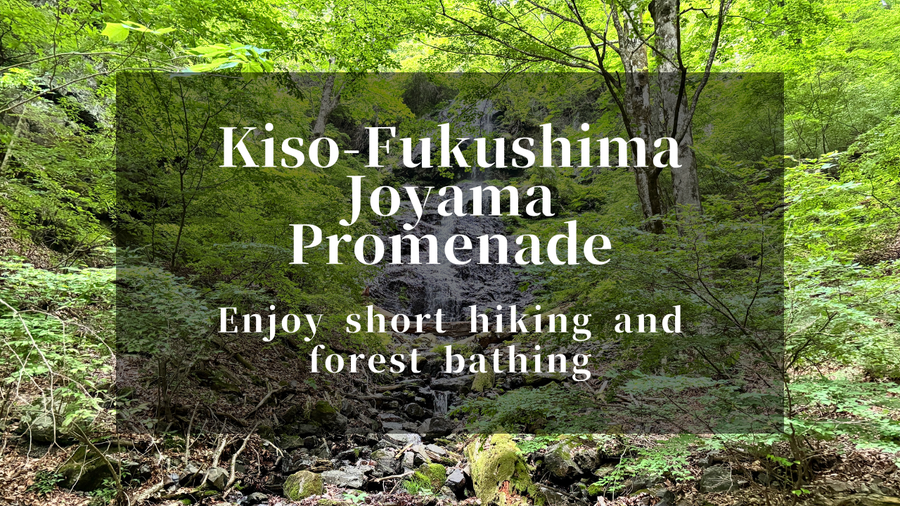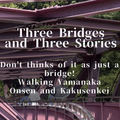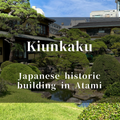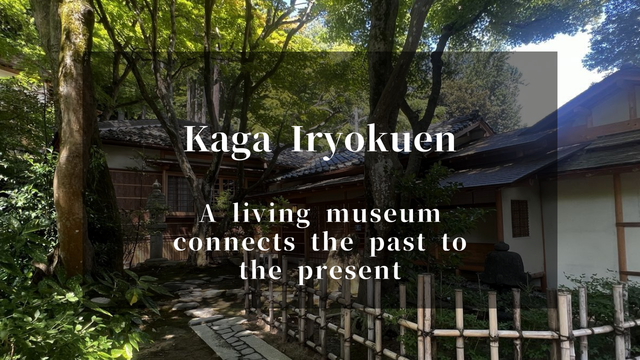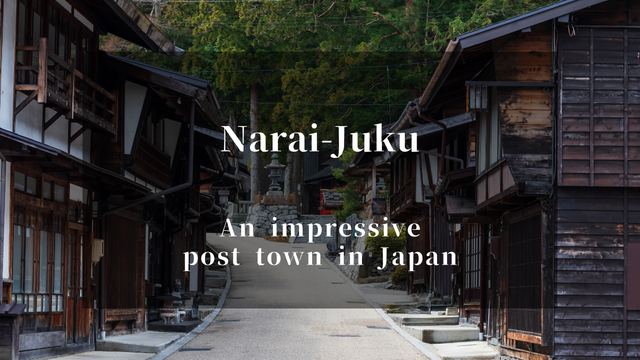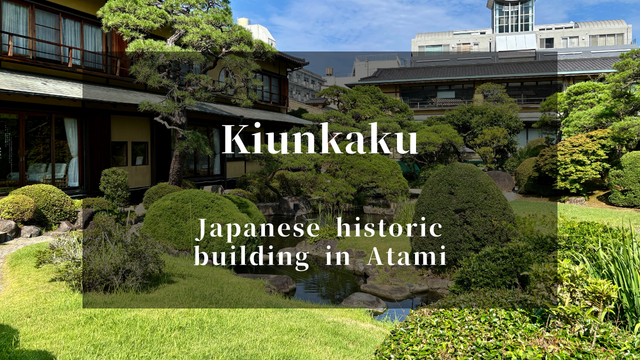Visiting Kiso-Fukushima is a chance to walk on the same stone paths that samurai warriors used 400 years ago, surrounded by beautiful mountains at 1,000 metres above sea level. This special place offers you a real conversation with Japanese history.
Kiso-Fukushima's charm is truly unique. You can enjoy amazing mountain views, beginner-friendly hiking on the historic Nakasendo Trail (中山道), and 400-year-old streets from Japan's Edo period (江戸時代, 1603-1868). The best part is that you can explore all of these attractions on foot within a small area. It's perfect for visitors who want to enjoy nature whilst learning about Japanese history and culture. From Kiso-Fukushima, you can also easily reach famous historic towns like Tsumago-juku (妻籠宿) and Magome-juku (馬籠宿).
The Historical Importance of Fukushima-juku (福島宿)
Fukushima-juku was located almost halfway along the Nakasendo Trail. This trail connected Edo (江戸, old Tokyo) and Kyoto (京都), and Fukushima-juku was an important resting place for travellers. The town had one of Japan's four major checkpoints called "Fukushima Sekisho" (福島関所), making it the political, economic, and transport centre of the Kiso Valley (木曽谷).
The Nakasendo Trail and the Post Town System
To understand Fukushima-juku, we need to learn about the Nakasendo Trail (中山道). This was one of five major roads built during Japan's Edo period. It connected present-day Tokyo and Kyoto over about 540 kilometres. Along this road, there were 69 post towns (宿場町) that provided accommodation, food, and fresh horses for travellers.
Fukushima-juku was extremely important as both a post town on the Nakasendo and the gateway to the Kiso Valley. The area was rich in forest resources, so the Edo government (江戸幕府) controlled it directly as "tenryo" (天領, government land).
The Role of Fukushima Checkpoint
The most important feature of Fukushima-juku was the Fukushima Sekisho (福島関所). This checkpoint enforced the government's policy of "iri-deppo ni de-onna" (入り鉄砲に出女), which meant:
Iri-deppo (入り鉄砲): Stopping weapons from entering Edo
De-onna (出女): Stopping the wives of feudal lords from leaving Edo (this was part of a hostage system)
This strict checkpoint system made Fukushima Sekisho as important as the famous Hakone Sekisho (箱根関所) for the government's security.
Main Tourist Attractions in Kiso-Fukushima
Here are the top places we recommend for international visitors to Kiso-Fukushima. All attractions are within walking distance from the station, so you can enjoy a relaxing stroll whilst experiencing nature.
Kami-no-Dan District (上の段地区): Preserved Edo Period Streets
We highly recommend starting your visit at the Kami-no-Dan District. This area has miraculously preserved the original street layout and buildings from the Edo period. The stone-paved streets and traditional buildings on both sides make you feel like you've travelled back 400 years to the age of samurai.
You can easily walk here from the station, making it perfect for visitors who want to experience Japan's old townscape. There are also charming cafés and bars nearby where you can rest during your exploration.
Shiroyama Walking Trail (城山遊歩道): Spectacular Views of Fukushima-juku
This is especially recommended for international visitors. Mount Shiroyama (城山) behind Fukushima-juku once had a real castle, giving it romantic historical significance. Today, there's a well-maintained walking trail that offers breathtaking views of Fukushima-juku and the entire Kiso Valley.
The trail is easy to walk, suitable for anyone with average fitness levels. It's about 5 kilometres long, making it perfect as an introduction to Nakasendo trekking. From near the summit, you can look down on the old streets of Fukushima-juku, giving you a perfect understanding of how an Edo period post town looked. The waterfall along the Shiroyama trail is a must-see attraction on the Nakasendo.
Time Required: About 1 hour and 30 minutes
Difficulty: Beginner-friendly
Appeal: Enjoy beautiful natural scenery surrounded by mountains
Foot-Bath(足湯): A Relaxing Spot to Rest Your Tired Feet
After exploring Fukushima-juku, soothe your tired feet at the free foot onsen (hot spring bath). Located near the former magistrate's office site, anyone can use it freely. It's the perfect healing spot to completely refresh yourself in Kiso's clean, pleasant air.
Price: Free
Bring: A towel is helpful
Location: Google Maps
Kozen-ji Temple (興禅寺): Experience Deep Japanese Zen Culture
This is also recommended for international visitors to Japan. In the temple grounds, you can see a magnificent wooden buildings and Japanese gardens beautiful in all four seasons. Spring cherry blossoms, summer greenery, autumn colours, and winter snow scenes show completely different faces depending on when you visit.
In this quiet environment surrounded by mountains, you can deeply experience Japanese Zen culture. The December snow scenes are indescribably beautiful, and if you visit in spring or summer, you'll enjoy even more overwhelming beauty.
Admission: Adults 200 yen
Opening Hours: 9:00-16:30
Location: Google Maps
Fukushima Sekisho Ruins (福島関所跡): Experience Edo Period Checkpoint Systems
The Fukushima Sekisho ruins are extremely valuable historical remains where you can realistically learn about strict Edo period checkpoints. Of particular interest are actual displays of "tegata" (手形), which were Edo period identity documents. This system, which was the origin of modern passports, will be full of surprises and discoveries for many international visitors.
There are making English information signs, making it a very interesting tourist spot. If you've never visited a Japanese checkpoint before, we definitely recommend visiting Fukushima Sekisho. Real swords are also displayed, making it more enjoyable than you might imagine.
Admission: Adults 300 yen
Opening Hours: 9:00-17:00 (last entry 16:30)
Closed: New Year period (29 December - 3 January)
Location: Google Maps
Cliff Houses (崖家づくり): Kiso-Fukushima's Unique Landscape
Houses built on cliffs created by the Kiso River's erosion represent Kiso-Fukushima's symbolic "cliff house construction." This was the wisdom of past generations to make effective use of limited land, creating unique and moving scenery you can't see anywhere else.
The views from the "Kami-no-Dan District" and from bridges over the Kiso River are excellent photo spots. The houses lined up along the river create scenery like a beautiful painting.
Location: Google Maps

